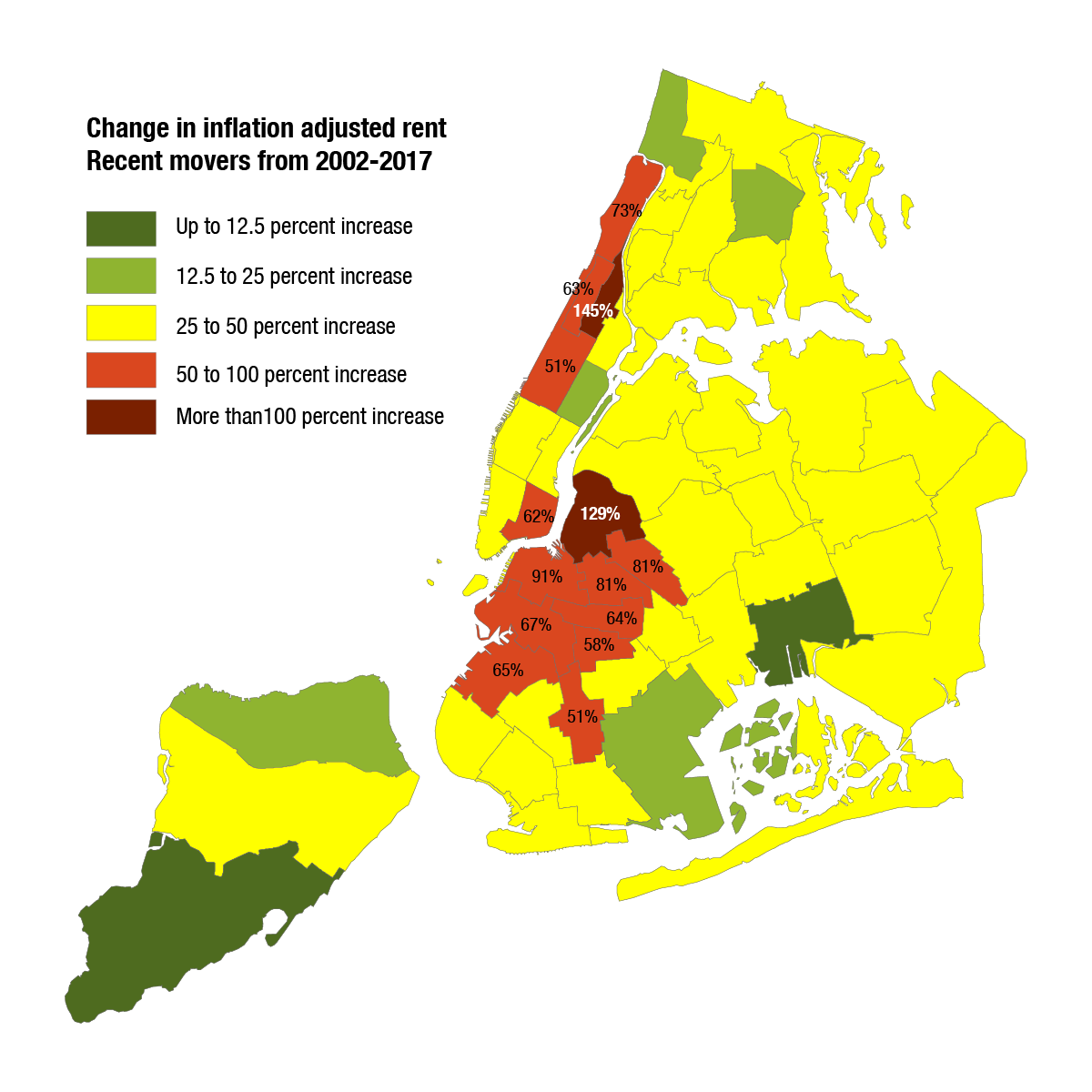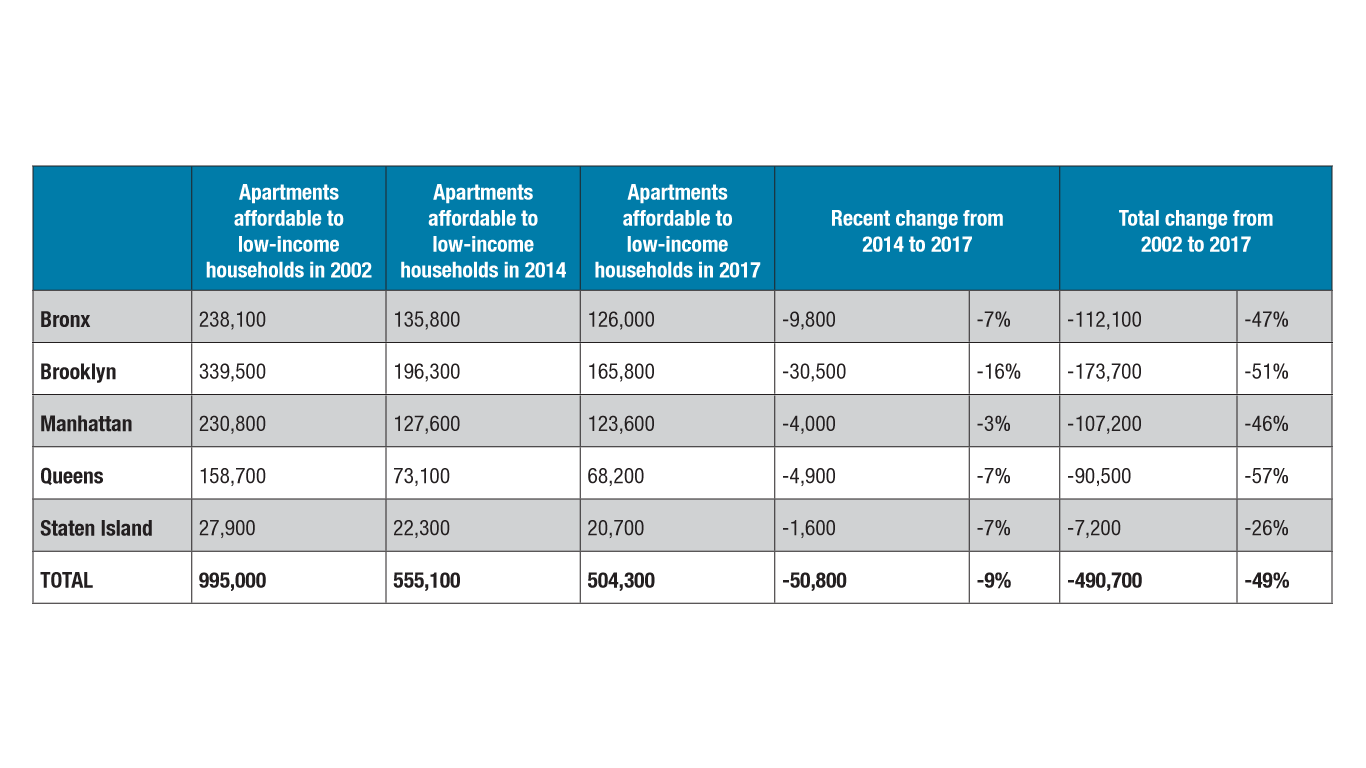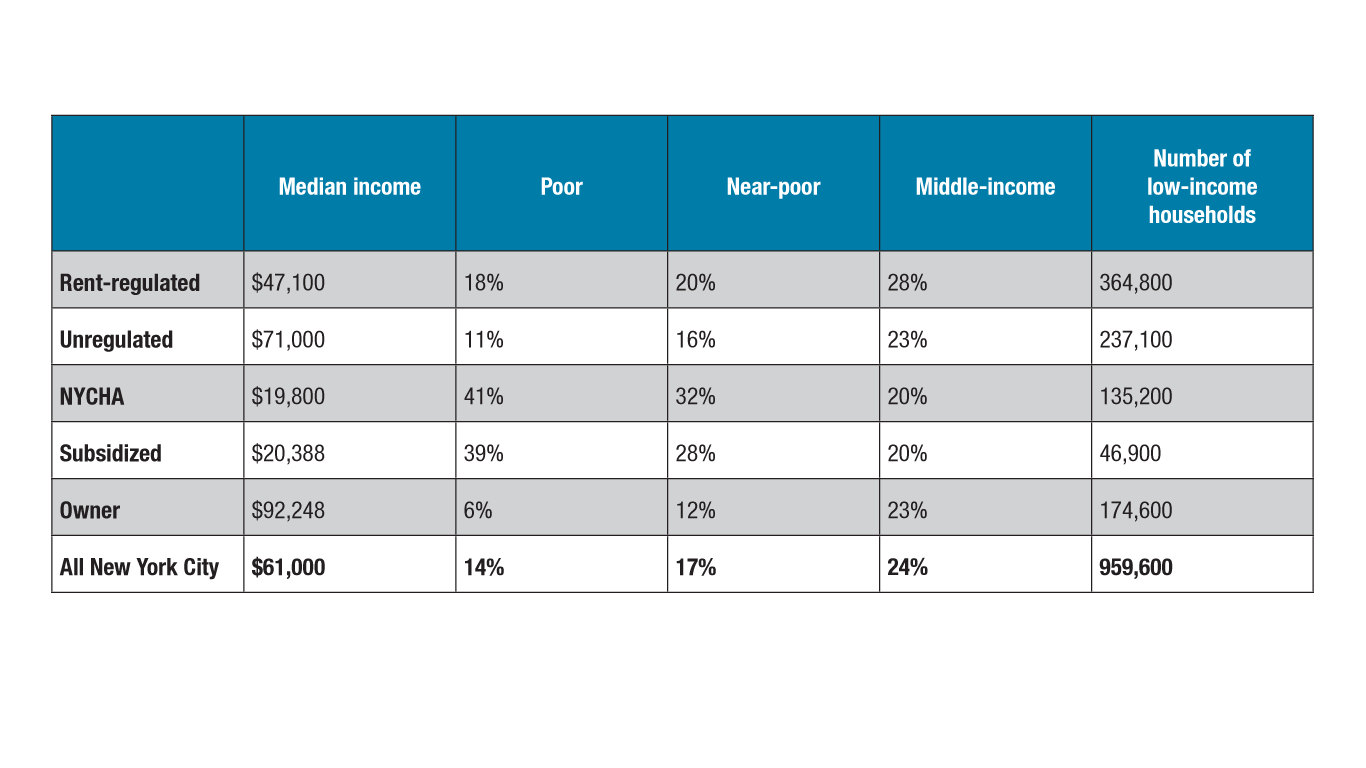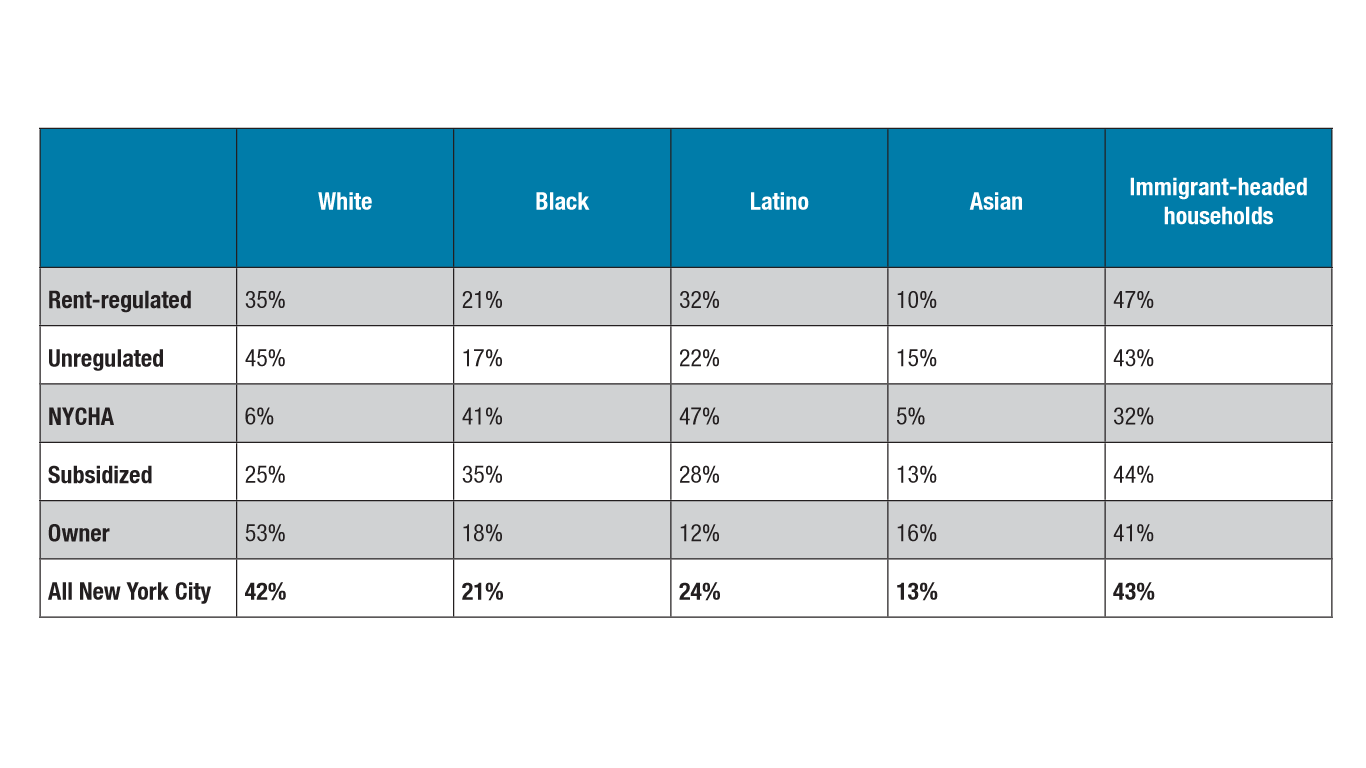Our Fast Analysis of the 2017 New York City Housing and Vacancy Survey
Thomas J. Waters
The Community Service Society analyzed just-released U.S. Census Bureau data from the 2017 version of its New York City Housing and Vacancy Survey (HVS). Our preliminary analysis of the results sheds light on important housing issues facing New York City and State—including the renewal in 2019 of rent control and rent stabilization and the ongoing need for massive capital reinvestment at the New York City Housing Authority.
Our analysis reveals that rents have risen rapidly, especially in inner-ring neighborhoods in Brooklyn and Manhattan. By looking at rents on private-market apartments that turned over during the five-year periods before the 2002 and 2017 surveys, we can get an idea how the market for vacant apartments has changed over time. Rents on these recent-mover apartments rose by 47 percent citywide over the 15-year period, even after removing the effect of inflation. The sharpest increases occurred in neighborhoods surrounding the traditionally high-rent area of Manhattan below Harlem. In two neighborhoods known for highly visible signs of gentrification, these rents more than doubled.
The loss of rent-regulated housing to vacancy deregulation is combining with the loss of subsidized housing and with rising rents overall to dramatically shrink the city’s supply of housing affordable to low-income households. Between 2002 and 2017, the city lost more than 490,000 units of housing affordable to households with incomes below twice the federal poverty threshold.
Background
The New York City Housing and Vacancy Survey is a survey of 13,000 New York households conducted every three years under contract with the New York City Department of Housing Preservation and Development. On August 9, 2018, the U.S. Census Bureau released detailed data from the 2017 version of its New York City Housing and Vacancy Survey.
Rents are rising rapidly, especially in inner-ring neighborhoods in Brooklyn and Manhattan.
In order to sensitively assess the changing state of the housing market, CSS focused on the rents being paid by tenants who have recently moved into private-market apartments (rent regulated and unregulated). This eliminates the tendency of lower rents paid by long-term tenants to smooth out market changes and mask the changes that affect tenants who are looking for a place to live. By analyzing apartments that turned over during the five-year periods before the 2002 and 2017 surveys, we can get an idea how the market for vacant apartments has changed over time. Rents on these recent-mover apartments rose by 47 percent citywide over the 15-year period, even after removing the effect of inflation. The sharpest increases occurred in neighborhoods surrounding the traditionally high-rent area of Manhattan below Harlem.

The supply of housing that is affordable to low-income New Yorkers continues to dwindle—especially in Brooklyn.
Despite the lower than usual increases permitted by the Rent Guidelines Board in recent years, the supply of housing affordable to households with incomes below twice the federal poverty threshold continues to shrink due to other factors, including the deregulation of rent-stabilized apartments, the large increases allowed when rent-regulated apartments become vacant, and rent increases in unregulated apartments.

Apartments are counted as affordable if they rent for less than 30 percent of 200 percent of the 2017 poverty threshold for a family of three.
Who lives in rent-regulated, public, and other types of housing?
Rent-regulated housing remains the most important resource for low-income New Yorkers with household incomes less than twice the poverty threshold. NYCHA’s stock of public housing is also extremely important because of its concentration of poor households (those with incomes below the poverty threshold), and because its rents are more affordable—fixed at 30 percent of tenants’ adjusted income.


Where is New York’s rent-regulated housing?
New York City’s rent-regulated housing is concentrated in upper Manhattan, the West Bronx, and central Brooklyn.
